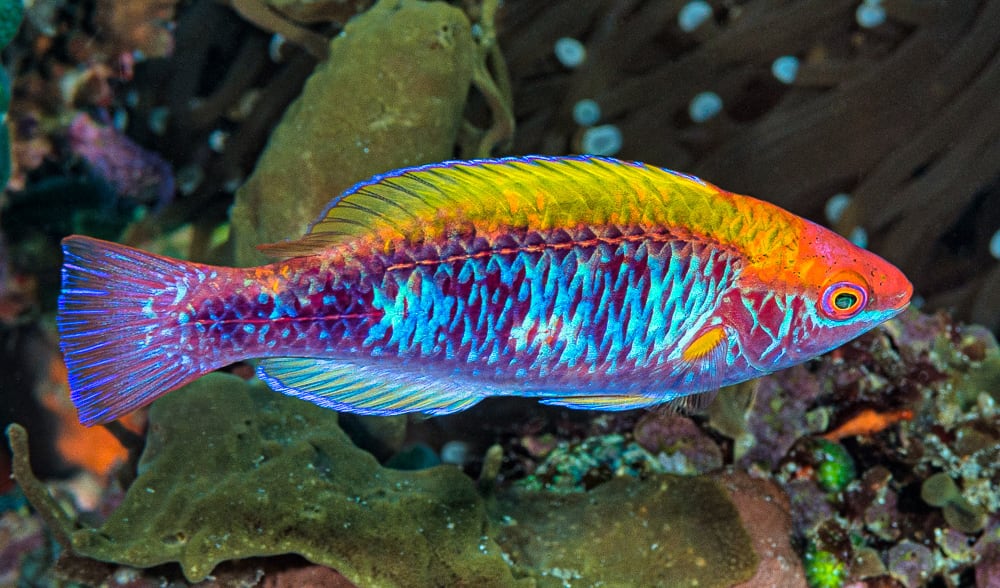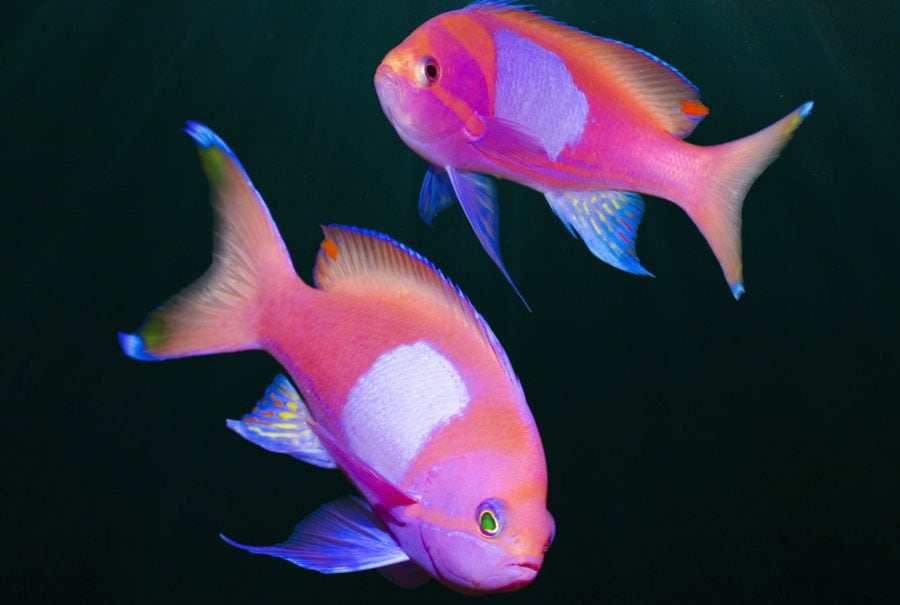Fairy wrasses are real-life rainbow fish

Bec Crew
Bec Crew

Members of the Cirrhilabrus genus of the wrasse family (Labridae) – one of the most species-rich families of fish in Australia – fairy wrasses boast an extraordinary array of patterns and pigments, some wearing almost every colour of the rainbow on their diminutive bodies.
There are more than 50 species of fairy wrasse on record, most of which are relatively new to science.
Before 1970, only a small handful had been discovered, but as diving technologies have advanced in recent decades, so too have opportunities for researchers to explore the deep and remote reef systems that the most elusive fairy wrasses call home.

In addition to their small protruding teeth and moderately elongated bodies, these fish are characterised by their bizarre double pupils – the corneas of their eyes are divided into two segments.
This characteristic is shared with species in the Paracheilinus, Pseudocheilinus, Pseudocheilinops, and Pteragogus genera of wrasse, and researchers suspect it helps the fish perceive tiny prey animals by giving them a magnified view.
And while we’re talking about double pupils, do yourself a favour and don’t Google it. There’s no way you’re not going to Google it now, but don’t say we didn’t warn you.
Back to fairy wrasses. These fish are like the parrots of the sea – it’s hard to fathom how nature can produce such bright and varied colours across the different species.
For instance, here’s the blue-throated fairy wrasse (Cirrhilabrus cyanogularis), found in Indonesia and the Philippines:
Here’s Scotts’ wrasse (Cirrhilabrus scottorum), found in reef systems ranging from the Great Barrier Reef to the Pitcairn Islands in the South Pacific Ocean:
And here’s the stunning rose banded fairy wrasse (Cirrhilabrus roseafascia), found off the northeast coast of Australia, Fiji, New Caledonia, Palau, Samoa, and the Cebu province of the Philippines:
Fairy wrasse might be tough little hunters, feeding on whatever small prey they can track down, but their relatively small size (no more than 10 cm long) makes them a target, too.
To protect themselves from predators at night, they construct a mucus cocoon to hide in while they sleep, which is disgusting and adorable all at once.
These fish are, unsurprisingly, loved by collectors, and make peaceful tankmates for other tropical and subtropical species.
Here’s a naoko’s fairy wrasse (Cirrhilabrus naokoae), an Indian Ocean species discovered just 10 years ago, showing off its beautiful colours in an aquarium setting:


